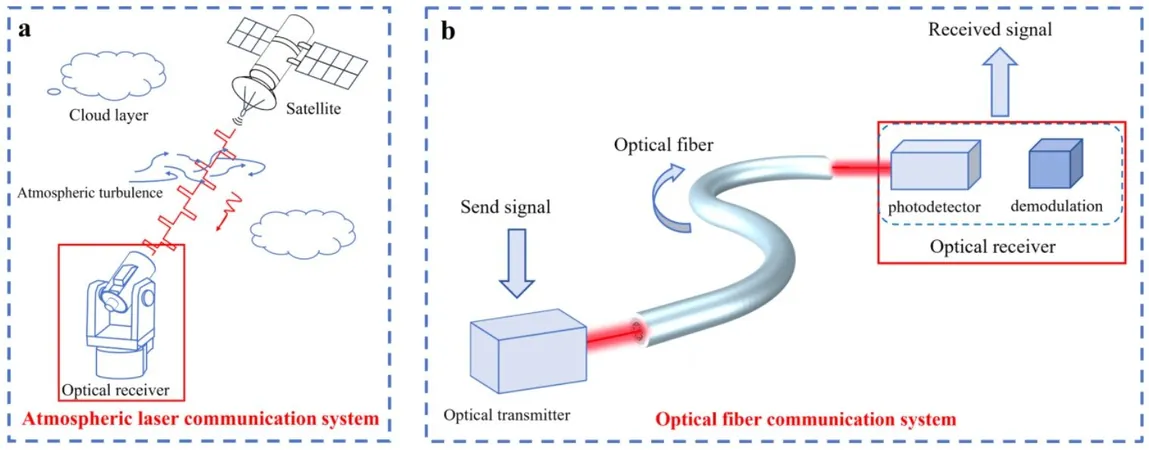
Revolutionary Device Transforms Optical Imaging and Sensing with Unipolar Torsion Technology
2025-04-30
Author: Charlotte
Unlocking the Power of Light Polarization
Light isn't just a source of illumination; its polarization is a vital characteristic that could elevate our imaging capabilities to unprecedented levels. Unlike traditional imaging techniques that rely solely on light intensity, leveraging polarization can significantly enhance contrast and resolution, paving the way for more detailed and insightful observations.
The Challenge of Current Polarization Solutions
Despite advancements in optical technology, current polarization detection methods struggle with two major hurdles. Most existing devices exhibit a limited spectral response, particularly those using plasmonic and metasurface strategies. Moreover, capturing both the angle (AoLP) and degree (DoLP) of linear polarization in low-dimensional materials has proven to be a complex task, leaving researchers with a pressing need for a solution that offers wider spectral range and heightened precision.
A Game-Changer in Optical Technology
Enter the groundbreaking "torsion unipolar barrier heterojunction" device, a revolutionary invention spearheaded by Prof. Li Liang of the Institute of Solid State Physics at the Hefei Institutes of Physical Science, in collaboration with Prof. Zhai Tianyou from Huazhong University of Science and Technology. Recently showcased in *Advanced Materials*, this innovative device promises to redefine the realm of optical imaging and sensing.
How It Works: The Science Behind the Innovation
At the heart of this device lies the unique anisotropic photoelectric properties of two-dimensional PdSe₂. By constructing a dual absorption layer and precisely tuning the energy band in the intermediate MoS₂ barrier layer, the researchers have crafted a system that allows for bias-programmable control. This cutting-edge design ultimately optimizes carrier transport paths, leading to unprecedented efficiency and accuracy.
Key Features That Set It Apart
This device isn't just revolutionary; it boasts some remarkable advancements:
1. **Bipolar Photocurrent Behavior**: Achieving a bipolar photocurrent at zero bias enables the direct decoding of polarization-encoded bi-binary communications, offering a leap forward in data transmission capabilities.
2. **Real-Time Measurement Without Auxiliary Polarizers**: In a significant departure from conventional four-pixel arrays, this device allows for the real-time simultaneous measurement of both AoLP and DoLP, effectively eliminating the need for additional polarizers.
The Future of Imaging and Sensing
With these advancements, the torsion unipolar barrier heterojunction device stands poised to revolutionize numerous fields, from telecommunications to biomedical imaging. The ability to harness the power of polarization in real-time not only enhances the quality of data but also opens doors to innovative applications and technologies in the future.









 Brasil (PT)
Brasil (PT)
 Canada (EN)
Canada (EN)
 Chile (ES)
Chile (ES)
 Česko (CS)
Česko (CS)
 대한민국 (KO)
대한민국 (KO)
 España (ES)
España (ES)
 France (FR)
France (FR)
 Hong Kong (EN)
Hong Kong (EN)
 Italia (IT)
Italia (IT)
 日本 (JA)
日本 (JA)
 Magyarország (HU)
Magyarország (HU)
 Norge (NO)
Norge (NO)
 Polska (PL)
Polska (PL)
 Schweiz (DE)
Schweiz (DE)
 Singapore (EN)
Singapore (EN)
 Sverige (SV)
Sverige (SV)
 Suomi (FI)
Suomi (FI)
 Türkiye (TR)
Türkiye (TR)
 الإمارات العربية المتحدة (AR)
الإمارات العربية المتحدة (AR)